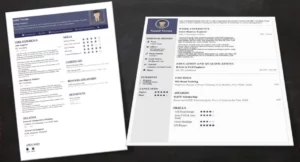Science Behind Sealants- How They Work to Protect Buildings
- By
- Pooja |
- December 18, 2024 |
- Civil Engineering, Building/ Structure Engineering,

Table of Contents
Applications of Sealants in Building Protection
Sealants play a crucial role in the construction and maintenance of buildings, acting as barriers to protect structures from various environmental stressors. They are vital in ensuring buildings' durability and robustness by preventing water, air, and other external elements infiltration. Understanding the science behind sealants involves delving into their composition, how they work, the types available, and their applications in construction. This blog explores these aspects in detail, explaining the importance of sealants in safeguarding modern buildings.
What Are Sealants?
Sealants are materials used to block the passage of fluids through the surfaces, joints, or openings in buildings. They can be either solid or flexible and are applied to areas where two different substrates meet, creating a continuous seal to prevent the movement of air, water, or other materials. Their primary function is to form an impermeable barrier that ensures the structural integrity of the building remains intact.
The two key properties of sealants are adhesion and cohesion:
Adhesion:
Adhesion refers to the sealant's ability to bond to the substrate or surface it’s applied to.
Cohesion:
Cohesion refers to the internal strength of the sealant that allows it to resist splitting or breaking when subjected to stress.
Sealants differ from adhesives because they are generally used to fill gaps rather than bond surfaces together. While some sealants possess adhesive properties, their flexibility and durability are their defining characteristics, allowing them to accommodate movement in a building structure.
The Science Behind Sealants
Sealants work by adhering to surfaces and filling gaps to create a protective shield. This process involves both chemical and physical reactions.
Chemical Bonds:
Most sealants form chemical bonds with the surfaces they are applied to, ensuring a strong adhesion. These bonds are usually covalent, meaning they share electrons between the atoms of the sealant and the substrate. This chemical bond allows the sealant to stick to the surface even when exposed to environmental stressors like moisture, UV radiation, or temperature changes.
Physical Barriers:
In addition to chemical bonding, sealants act as physical barriers. Once applied, they form a solid or flexible layer that blocks the movement of air, water, or other materials. For example, silicone sealants create a waterproof barrier, preventing moisture from entering a building, which can lead to structural damage, mold growth, and deterioration.
Elasticity and Flexibility:
One of the key features of sealants is their ability to remain flexible while adhering to different substrates. Buildings are constantly subjected to forces such as thermal expansion, wind loads, and even seismic activities. Sealants need to be elastic enough to accommodate the movement of the materials they are sealing. This property, known as elongation, allows the sealant to stretch or compress without breaking the bond or cracking.
Read More:
Curing Process:
Sealants typically go through a curing process that transforms them from a liquid or paste state to a solid, flexible form. This process may involve chemical reactions triggered by air (oxygen), moisture, or temperature. For instance, polyurethane and silicone sealants undergo curing when exposed to moisture in the air. During this phase, the sealant cross-links its molecules, enhancing its strength and flexibility.
Types of Sealants
There are various types of sealants used in construction, each with unique properties tailored to specific applications. The most common types include:
Silicone Sealants:
These are highly flexible and durable, making them ideal for sealing joints in building facades, windows, and doors. Silicone is also resistant to UV rays and extreme temperatures, which makes it a preferred choice for external applications. It remains flexible even at low temperatures, making it excellent for areas subjected to thermal expansion.
Polyurethane Sealants:
Known for their toughness and abrasion resistance, polyurethane sealants are commonly used in heavy-duty applications such as sealing expansion joints in concrete or for industrial buildings. They also have good adhesion properties and can be painted over once cured.
Acrylic Sealants:
These are used mainly for interior applications, such as sealing gaps in walls and ceilings. Acrylic sealants are easy to apply and clean up and can be painted once dry. However, they tend to be less flexible than silicone and polyurethane sealants, making them less suitable for areas subjected to significant movement.
Butyl Sealants:
These are rubber-based sealants that offer excellent water resistance and adhesion. Butyl sealants are commonly used in roofing and weatherproofing applications, as well as for sealing around windows and doors.
Applications of Sealants in Building Protection
Sealants are applied in various parts of a building to protect against the infiltration of water, air, dust, and other contaminants. Some of the primary areas where sealants are used include:
Joints and Gaps:
Sealants are applied to joints where two different materials meet, such as between a window frame and a wall. These areas are prone to leakage, and the sealant acts as a barrier to prevent water or air infiltration.
Roofing and Flashing:
Sealants play an essential role in roofing systems to prevent water from penetrating through roof seams, edges, or flashing. They protect against leaks that could cause damage to the building's interior and structural elements.
Facade Sealing:
For building exteriors, sealants help in sealing facades and ensuring energy efficiency by preventing air leakage. Proper facade sealing contributes to better insulation, reducing heating and cooling costs.
Bathrooms and Wet Areas:
In areas such as bathrooms and kitchens, sealants are used around fixtures like sinks, bathtubs, and toilets to prevent water from seeping into walls or floors. This helps to avoid water damage and the growth of mold or mildew.
Environmental Considerations
As the construction industry moves towards sustainability, there has been a growing focus on environmentally friendly sealants. These are low-VOC (Volatile Organic Compound) sealants that reduce the emission of harmful chemicals into the environment. Additionally, many modern sealants are designed to be more durable and longer-lasting, reducing the need for frequent reapplication and minimizing waste.
Challenges and Limitations
Despite their effectiveness, sealants are not without challenges. Over time, exposure to harsh environmental conditions can degrade the sealant, causing it to crack or lose its adhesion. Regular maintenance and inspections are necessary to ensure that the sealants remain effective. Additionally, selecting the wrong type of sealant for a particular application can lead to premature failure, making it essential to choose the correct material based on the building's needs and conditions.
Sealants are a necessary component in the construction and maintenance of buildings. Their ability to protect against environmental stressors, such as water, air, and temperature changes, is fundamental for ensuring the longevity of structures. By understanding the science behind how sealants work and selecting the appropriate types for different applications, building owners and contractors can enhance the endurance and performance of their projects. With advancements in sealant technology, particularly in the realm of sustainability, the future of building protection looks promising.
Please feel free to like, share and comment.
Admin, gcelab.com
Please see our Pillar Post to know why we founded gcelab.com.
Read More:

Pooja
Founder at gcelab.com, Pooja is an Entrepreneur unlocking human potential. Working in the Principles of Lean Start-up, Pooja believes in Transparency and User Happiness the most. Pooja’s background in teaching gives her a sophisticated grasp on even the most tedious aspect of course building. She is passionate about people who believe that good is not enough.



